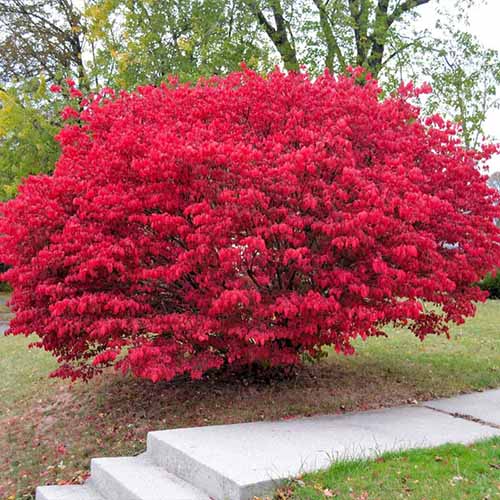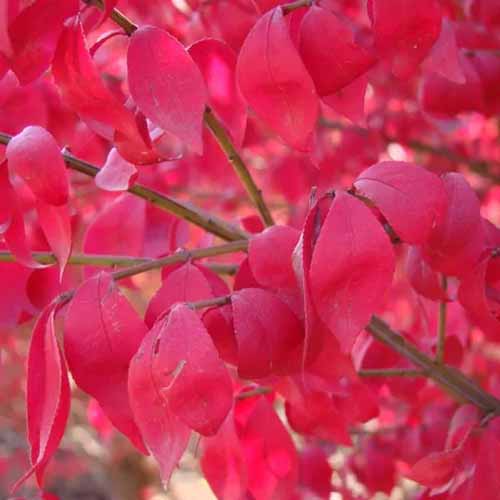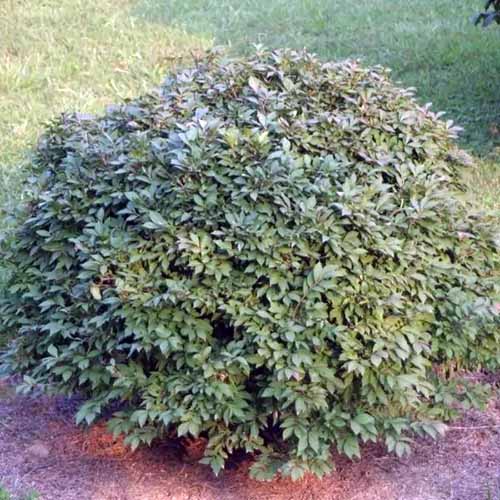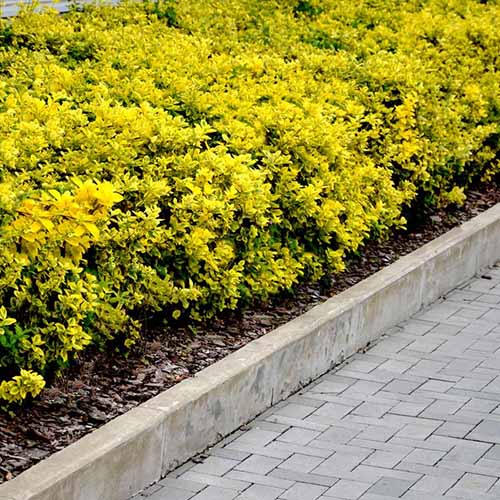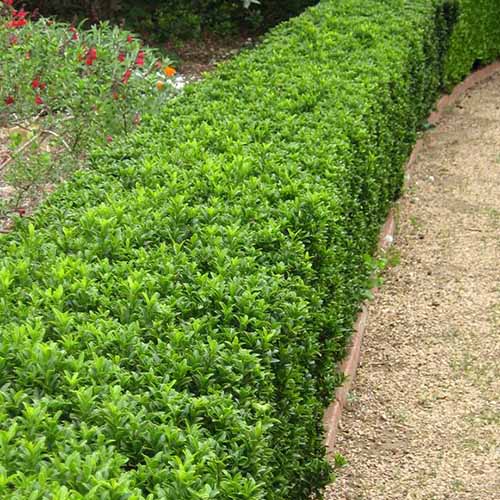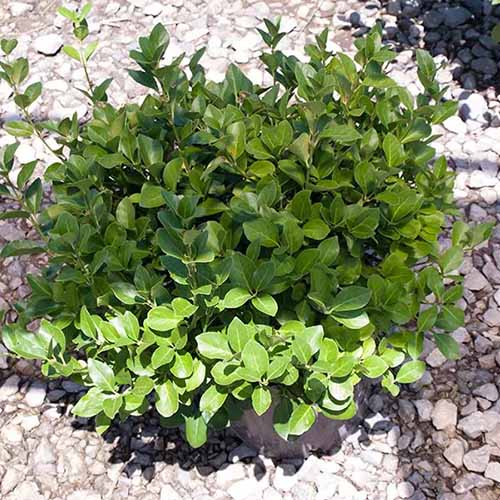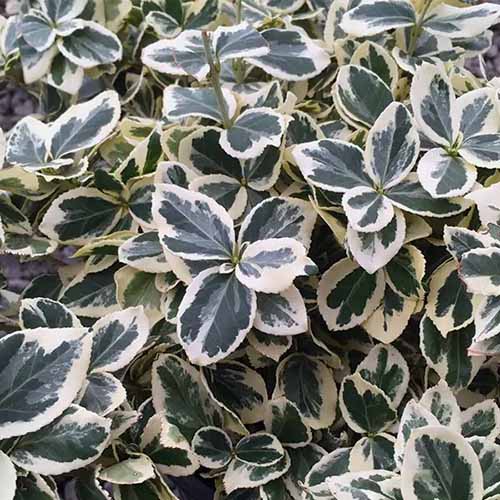11 Types of Euonymus: Choosing the Best Plants for Your Garden
Life feels like a nonstop grind of weighing different options, doesn’t it?
“Creamy or crunchy?” “Denim or khaki?” “Do I tell them how I feel or wonder ‘What if…’ forever?”
The strain of constantly choosing things adds up, and the last thing you want to deal with at the end of a tough workweek is a difficult gardening choice. Your garden is your zen space, for crying out loud! It should take away your stress, not add to it.
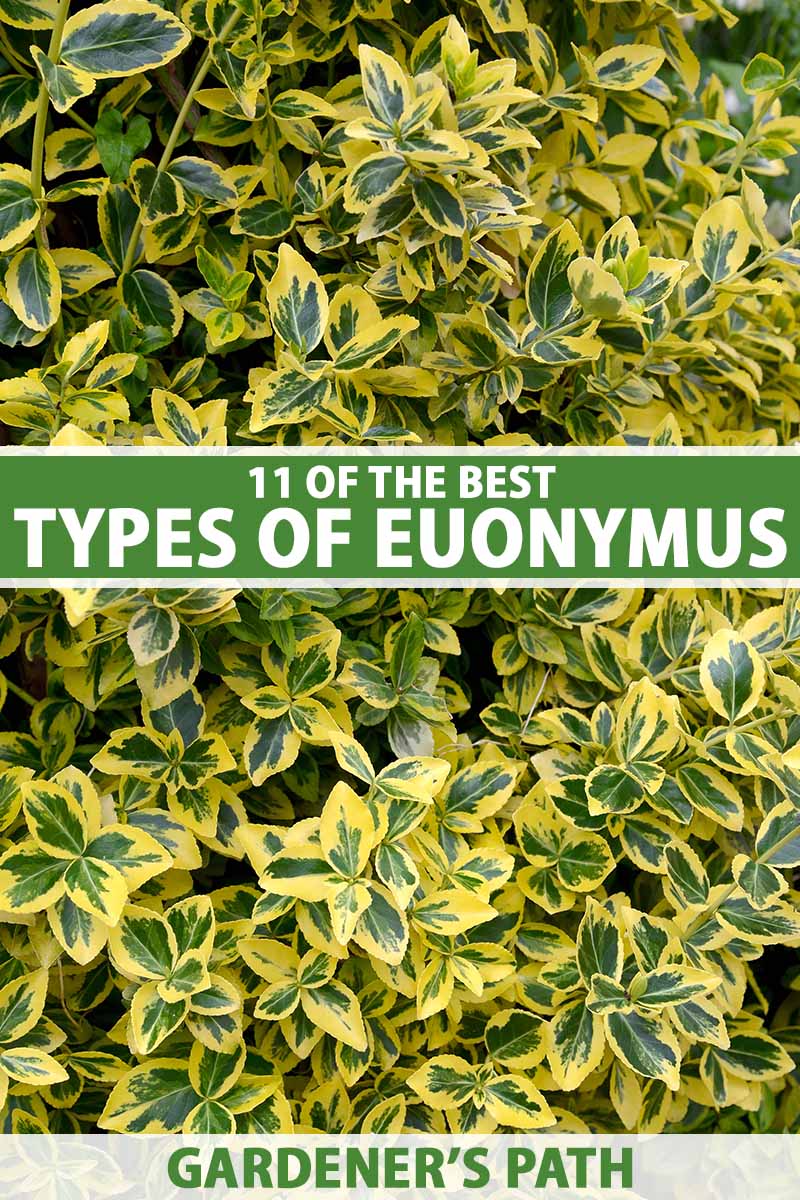

We link to vendors to help you find relevant products. If you buy from one of our links, we may earn a commission.
There are a lot of different Euonymus species out there, and you’re a busy gardener. You don’t have time to research and analyze the top contenders… but luckily, I do. ‘Tis my job, and all.
This guide describes 11 different species in detail, and gives you the necessary data for all your tough Euonymus-choosing decisions. You’ll have more information and less decision-making fatigue after reading this!
Here’s the list, gang:
11 of the Best Types of Euonymus to Grow at Home
Let’s begin!
1. American
As its name somewhat implies, this deciduous shrub is native to the Eastern United States.
Growable in USDA Hardiness Zones 6 to 9, E. americanus starts out sprawling as a juvenile, but becomes more erect at maturity, reaching a height and spread of four to six feet when fully grown.
The leaves are egg- to football-shaped with finely serrated margins, and the greenish-yellow flowers bloom inconspicuously in early summer.
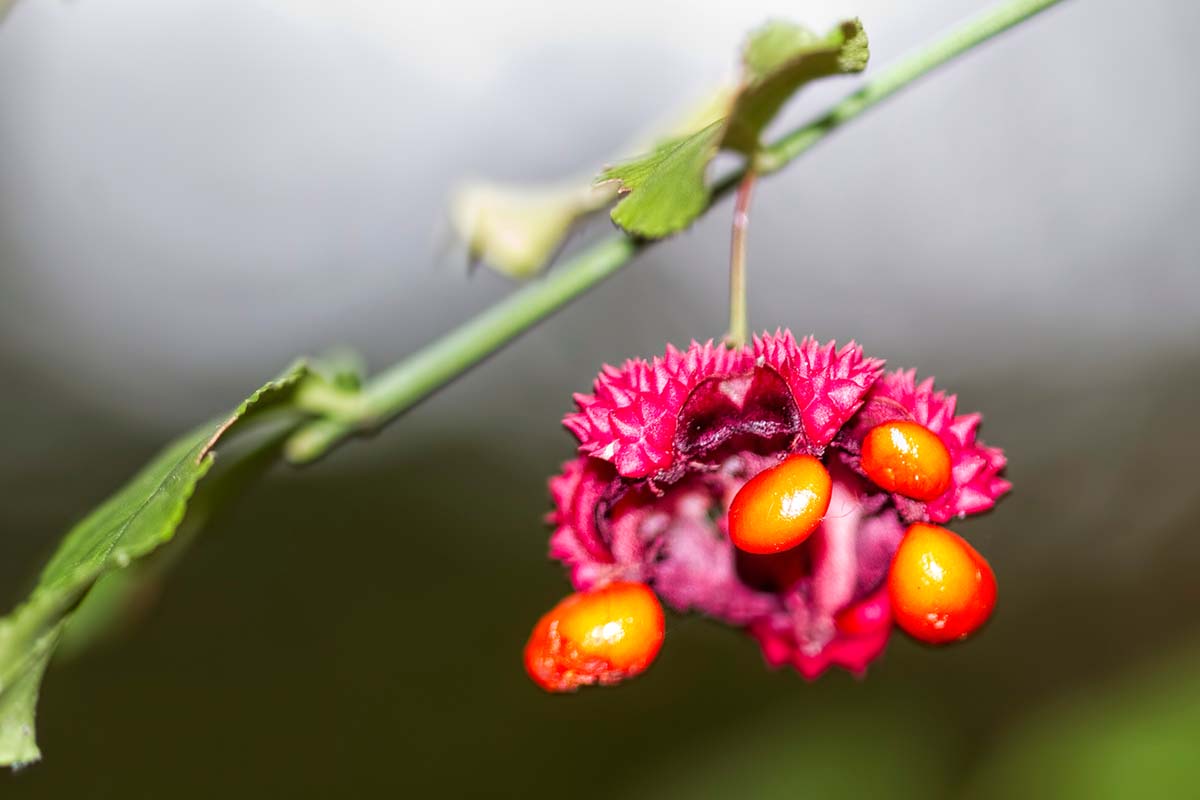

But its crimson, warty, and capsuled fruits are the real show-stopper. These fruits are gorgeous when they emerge in fall, but they look even better when they split open upon ripening to reveal five orange seeds.
These strawberry-looking fruits and the way they burst open to expose the seeds they contain have inspired at least two additional nicknames for American euonymus: “Strawberry Bush” and “Hearts A’busting.”
In the landscape, these ornamentals shine in native gardens or when placed on the edges of woodlands as naturalized plantings.
They’re very attractive to songbirds and small mammals, so keep them away from parts of the garden where you don’t want animals to munch.
2. Burning Bush
No Euonymus list is complete without the burning bush, E. alatus. Arguably the poster child of the genus, this deciduous shrub is native to Korea, Japan, China, and eastern Russia.
It thrives in Zones 4 to 8, and grows to a maximum height and width of 15 to 20 feet. You can learn more about growing burning bush in our guide.
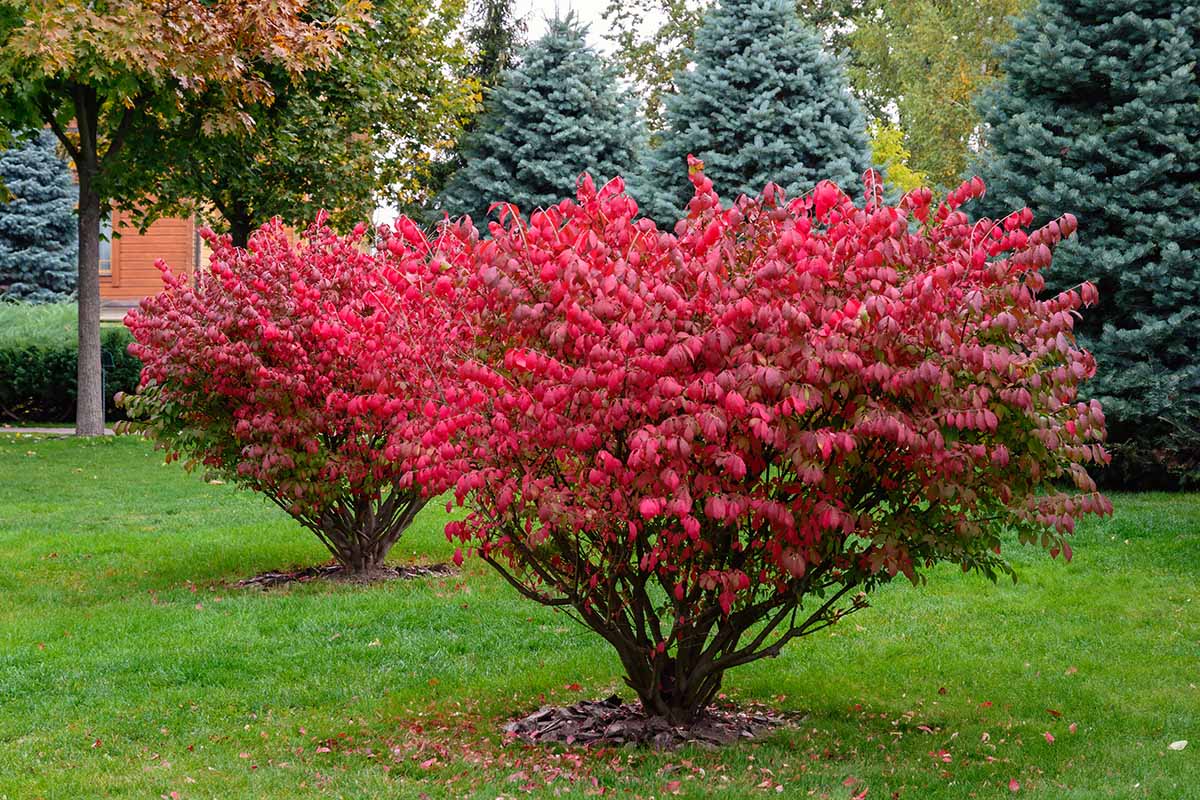

The small flowers and fruits are insignificant, but the foliage is what makes this plant special. The leaves of E. alatus are oval shaped with scalloped or serrated edges, in typical Euonymus fashion.
This foliage looks great when it’s green and lush, and it’s especially stunning in fall as the leaves turn a fiery red, hence the “burning bush” moniker.
Along with their autumnal value, burning bushes make for fantastic specimens, hedges, screens, borders, and foundation plantings. They’re also ideal waterside plantings, since the fall foliage reflects off of water nicely.
Fast Growing Trees has the standard burning bush for you in two-gallon containers.
There are a handful of worthy cultivars: ‘Compacta’ is about half the size of the species plant, with denser foliage that doesn’t need as much pruning.
You can find ‘Compacta’ available from Nature Hills Nursery in #3 and #5 containers.
‘Rudy Haag’ is half the size of ‘Compacta,’ with foliage colored a bit rosier than standard, but it can be tough to find on the market.
Nature Hills Nursery has ‘Rudy Haag’ plants available in #1 containers.
Despite its beauty and popularity, E. alatus is generally considered invasive in many areas. If your local laws prohibit this Euonymus species, then the Eastern Wahoo is a fine choice for a substitute. More on that one in a couple entries…
3. Dwarf Turkestan
E. nanus var. turkestanicus has a pretty wide native range, from western China all the way to the Caucasian Mountains where Europe and Asia meet.
Best grown in Zones 2 to 6, this dwarf variety definitely lives up to its name, reaching a maximum height and spread of just three feet.
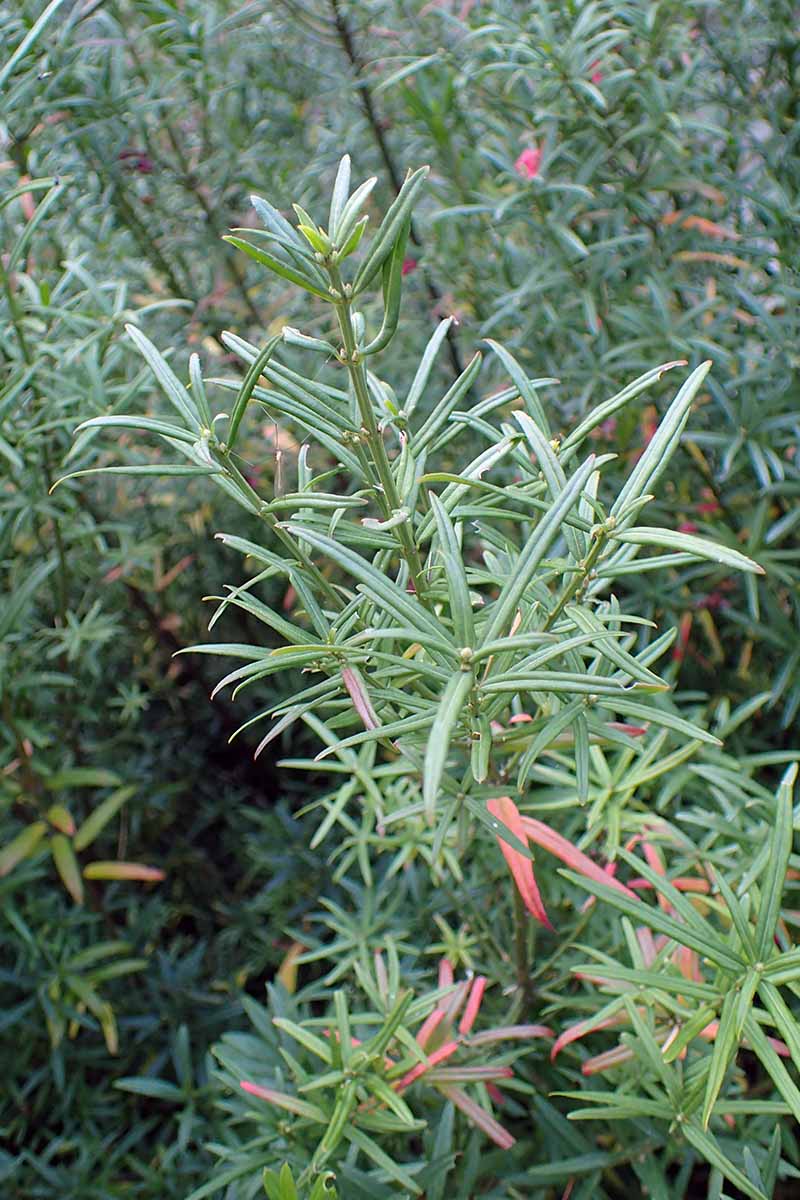

The narrow, almost wispy foliage is bluish-green in summer, and turns a bright red in autumn.
The flowers are brown and ornamentally insignificant when they bloom in spring, but the pink-capsuled, orange seeds that emerge in fall more than make up for it.
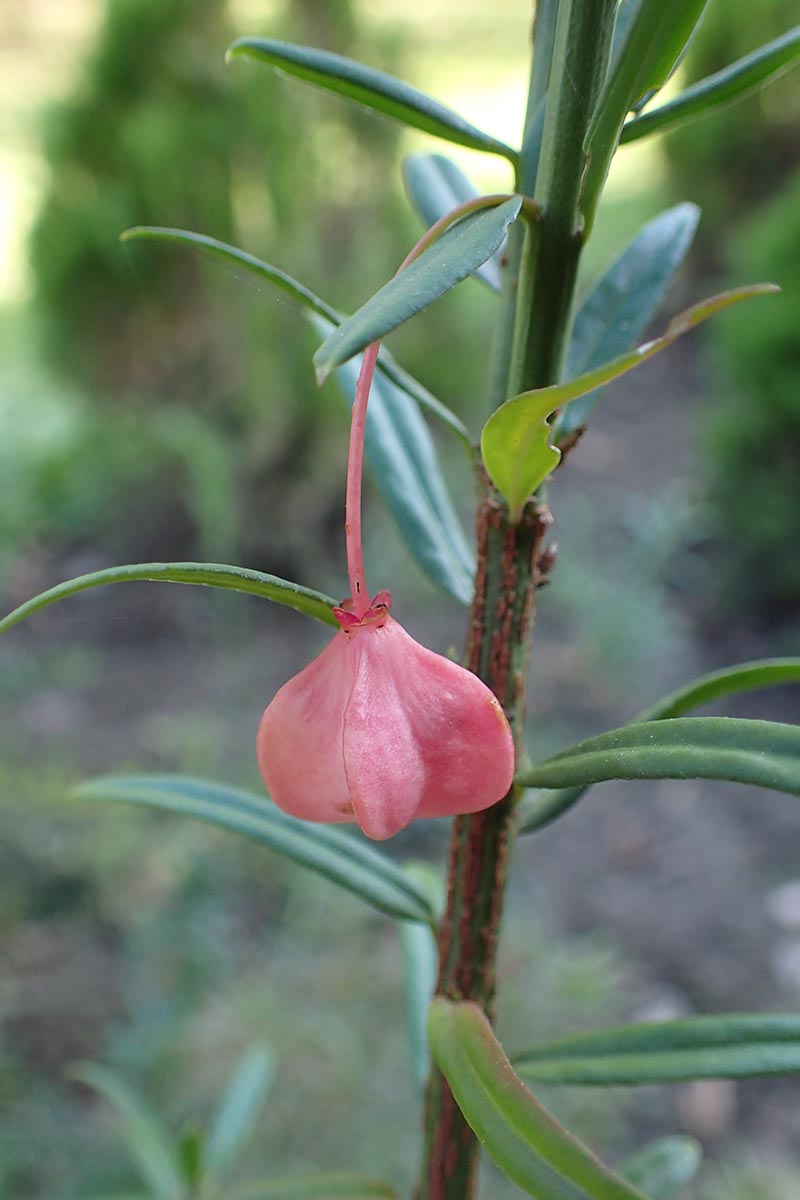

While not necessarily a showstopper like other species on this list, this compact shrub has the advantage of fitting into tight garden spaces that are too snug for a larger Euonymus.
It also works well in cottage gardens and as an accentuating border for flower beds. This dwarf species won’t shield your backyard from your neighbors like an E. alatus might, but for the die-hard Euonymus gardener, it’s worth having in your collection.
4. Eastern Wahoo
Without question, the award for “Most Amusing Common Name” definitely goes to this one, for the plant also known as E. atropurpureus.
This deciduous shrub is native across the eastern regions of North America, and is ideally grown in Zones 3 to 7. On average, it grows 10 to 15 feet in height, and has an irregularly-shaped crown.
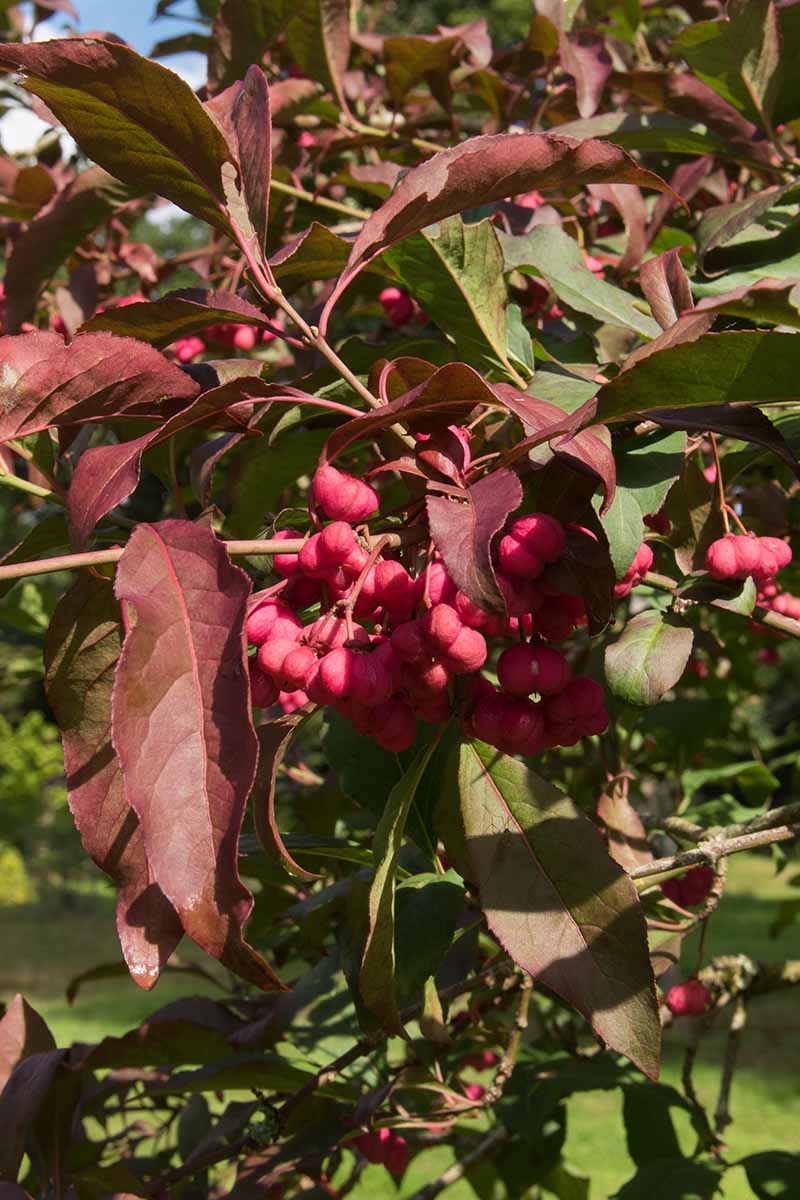

The atropurpureus part of its name references the non-showy, purple flowers and the almost purplish, deep red shade of the autumn leaves.
The bright red, capsuled fruits provide visual interest when they appear in fall, and are arguably the best-looking part of the plant.
All in all, it kinda looks like a shaggier-looking burning bush, to be frank – which is why another one of its common names is the burning bush, confusingly enough.
Ornamental uses include native gardens, woodland plantings, and informal hedges or screens.
Plus, the more natural-looking unkemptness of an eastern wahoo might be a breath of fresh air compared to heavily manicured burning bushes that are often overused in landscapes.
5. European
Most at home in Zones 4 to 7, E. europaeus reaches 12 to 30 feet in height and 10 to 25 feet in width. Hailing from eastern Europe and western Asia, it has since made its way across Europe and into North America.
This deciduous plant starts out life as an upright shrub, but it spreads and takes on a more rounded habit with age.
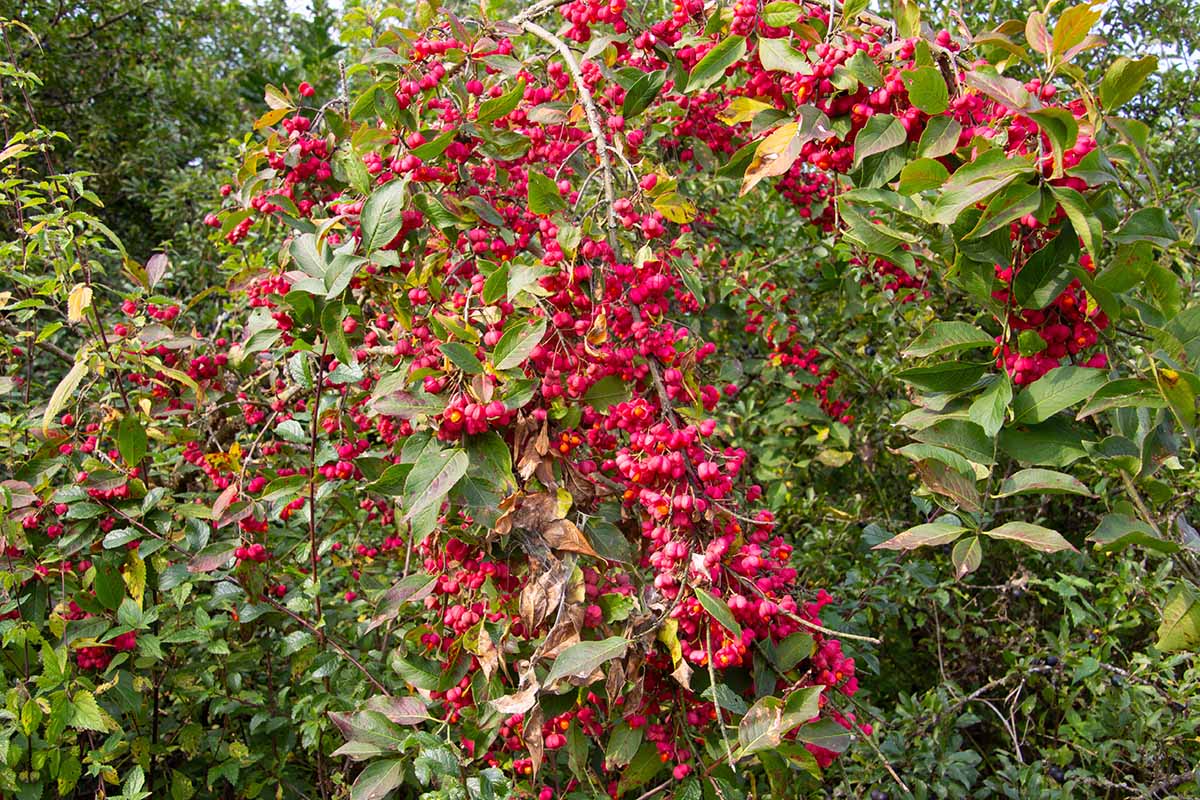

The leaves are pretty standard for the genus: football-shaped, with rounded to serrate margins, and a spectacular reddish color in autumn. The small, insignificant flowers emerge in spring and summer, and the capsuled pink fruits burst with orange seeds in fall.
With the landscape versatility of E. alatus and the showy fruits of E. americanus, this plant carves out a solid ornamental niche for itself.
Notable cultivars include ‘Albus,’ which has white fruits instead of pink, and ‘Red Ace,’ which produces rosy-red fruits and even more brilliant orange seeds.
6. Fleshy-Flowered Spindletree
Quite possibly the most beautiful entry on this list, the fleshy-flowered spindletree (E. carnosus) is native to southwestern China, Taiwan, the Himalayas, and parts of Japan.
Growing best in Zones 4 to 7, this deciduous shrub typically reaches heights of 12 to 16 feet and spreads of eight to 10 feet. Occasionally, it’ll grow 25 to 30 feet tall.
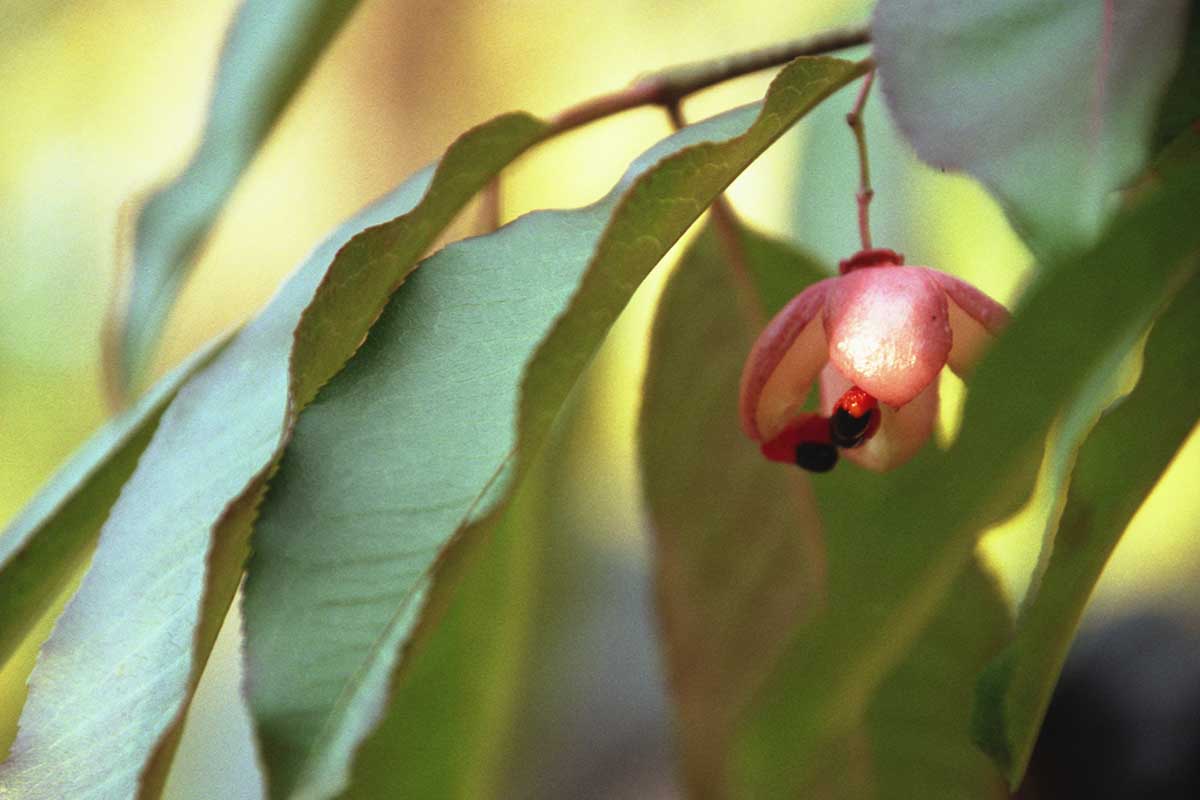

The creamy-white, fragrant, thick flower clusters emerge in summer with a corymb structure: the flower heads have longer and longer stalks the further they are from the center of the arrangement, which keeps them level with each other. Kind of like a Hanukkah menorah, I suppose.
These flowers produce pink, four-valved, capsuled fruits in autumn, which split open to reveal showy orange-coated seeds.
The glossy, dark green leaves are three to seven inches long with a magnolia-esque thickness, and turn a beautiful purplish-red in autumn. When the leaves drop, the gorgeous gray bark is fully revealed, offering wintertime interest.
Honestly, the only downside of growing this plant is how hard it is to locate, commercially… but no worthwhile treasure is easily found!
7. Hamilton’s Spindletree
Choosing E. hamiltonianus is a great way to shake things up if you need a visual palette-cleanser from standard Euonymus leaves.
Hailing from Korea and Japan, Hamilton’s spindletree is most comfortable in Zones 4 to 7.
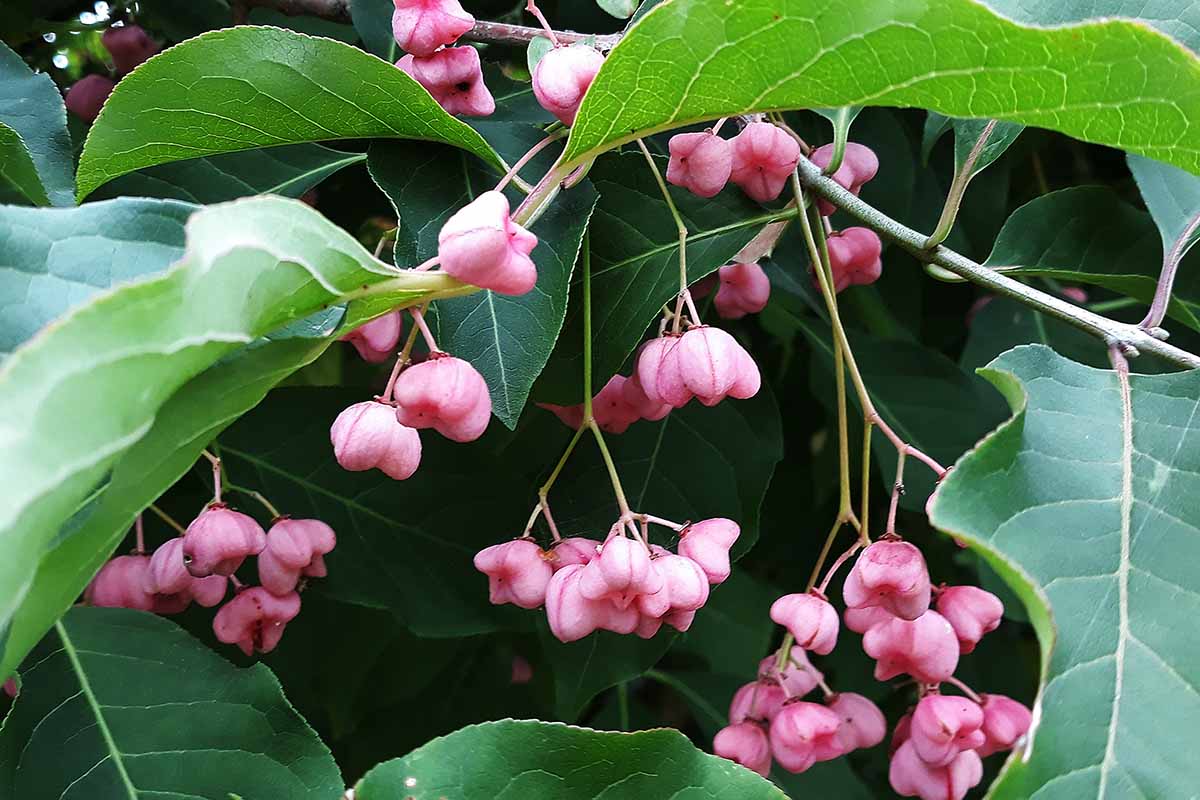

The foliage is unique for a Euonymus: the surfaces are rough, the margins are wavy, and the top halves of the leaves are wider than the basal halves. In fall, they change color from a dark green to an attractive purplish-red.
Growing 10 to 15 feet tall and spreading eight to 12 feet, this deciduous shrub/tree has spring-blooming, white flower clusters that are somewhat showy. Come autumn, these give way to reddish-pink fruit capsules which house orange-coated seeds.
8. Japanese
E. japonicus is native to Japan and Korea, and grows best in Zones 6 to 9.
It typically grows 10 to 15 feet tall and attains half of that in spread. Though rare, it can reach 25 feet in height in ideal conditions. The foliage is dense and glossy, while the flowers and fruits are non-ornamental, lacking showiness.
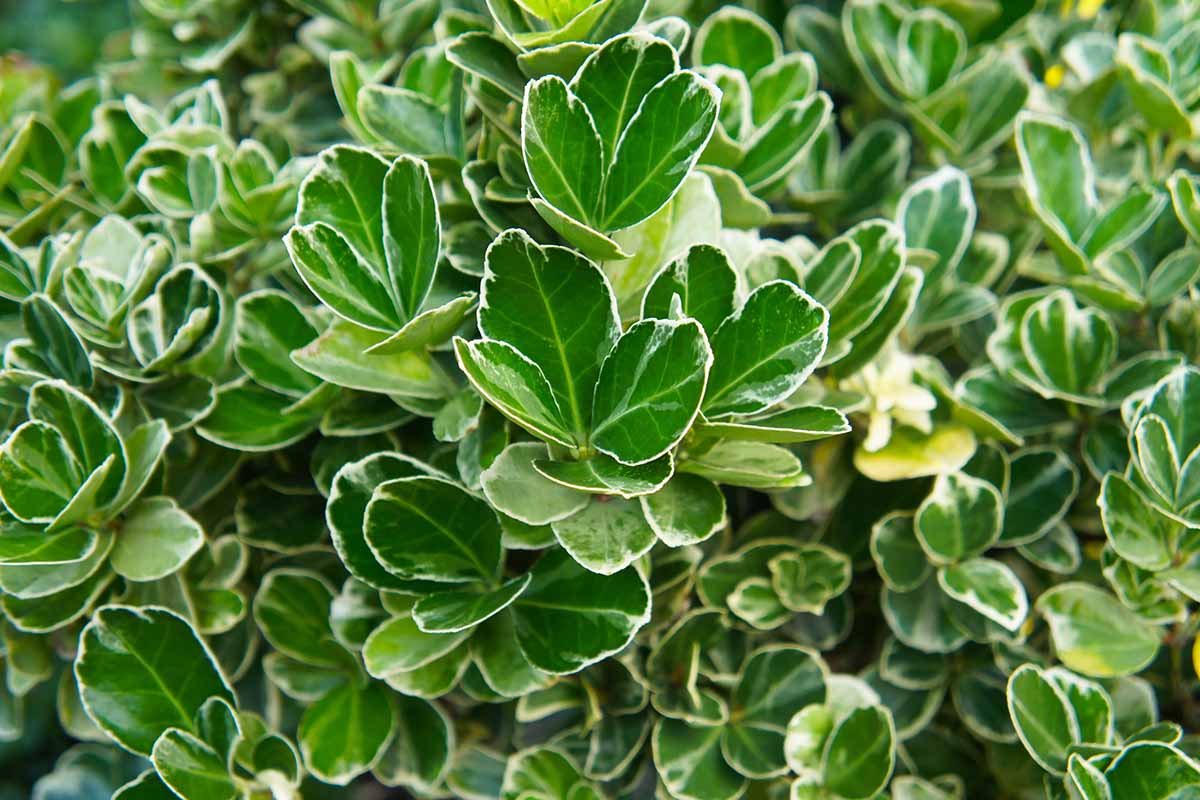

This plant is the first evergreen entry on our list, and it rivals the boxwood in pruning tolerance.
Its many cultivars and massive potential for variegation offer many different flavors of foliar interest. All that combined with a rounded form makes E. japonicus an ideal hedge or border planting.
Some notable varieties: ‘Aureomarginatus,’ which has green leaves and thick golden-yellow margins, and ‘Microphyllus,’ a compact and small-leaved cultivar that looks like a Euonymus–Buxus lovechild.
‘Aureomarginatus’ is offered by Fast Growing Trees in three-gallon containers.
‘Microphyllus’ can be purchased from Plants Express in one- and five-gallon containers.
9. Spreading
Ideally grown in Zones 5 to 8 and native to Japan, as well as east and central China, E. kiautschovicus is a semi-evergreen, rounded shrub that grows eight to 10 feet tall.
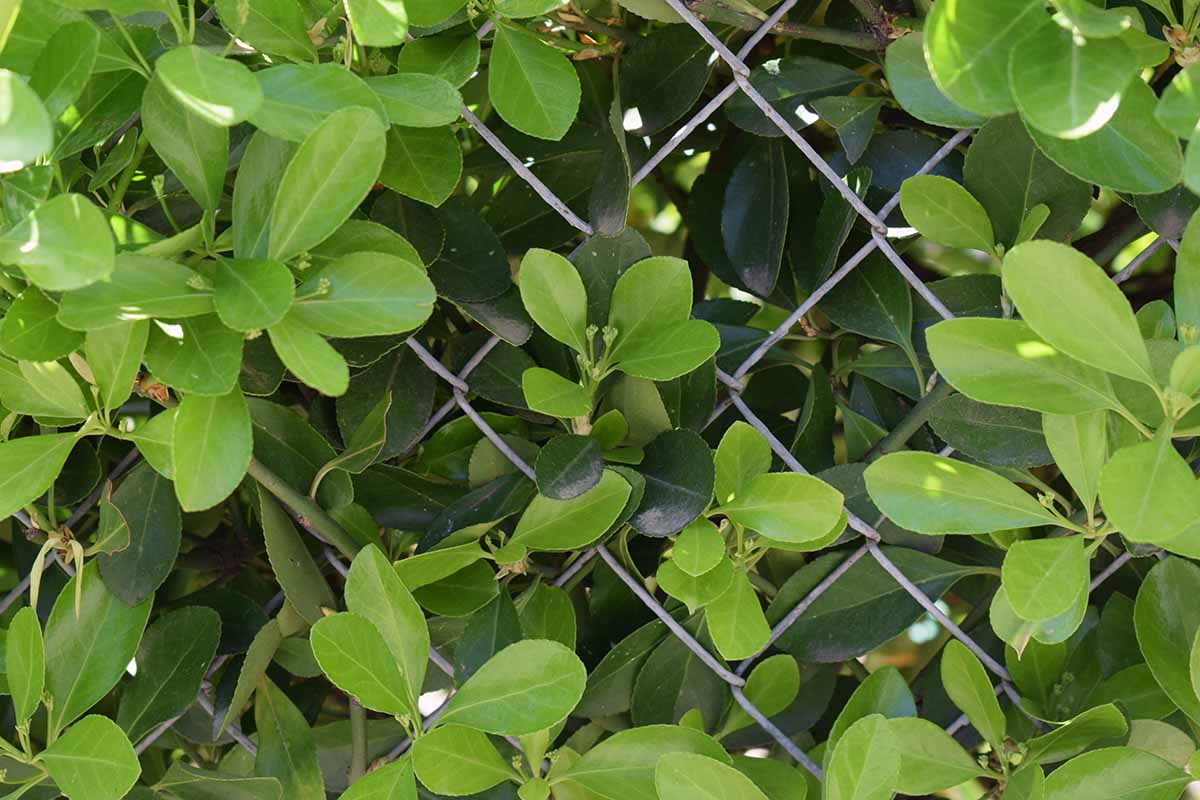

It has glossy green leaves and greenish-white flowers that bloom in summer, which are quite attractive to bees and other insects. This plant also produces pink fruit capsules, which split open to reveal red seeds in autumn.
E. kiautschovicus makes for solid hedges, borders, specimens, foundation plantings, and grouped plantings.
However, because of how much bees like it, it’s not the best choice for placing near patios, porches, or any place where stingable people congregate.
‘Manhattan’ is an especially vigorous cultivar that makes for a very formal hedge.
Plants in three-gallon containers can be purchased from Nature Hills Nursery.
10. Winterberry
E. bungeanus is another Chinese and Korean native, ideally grown in Zones 4 to 8. This deciduous shrub or small tree reaches a height of 15 to 24 feet and a spread of 10 to 15 feet, with foliage that turns a stunning yellow-pink in autumn.
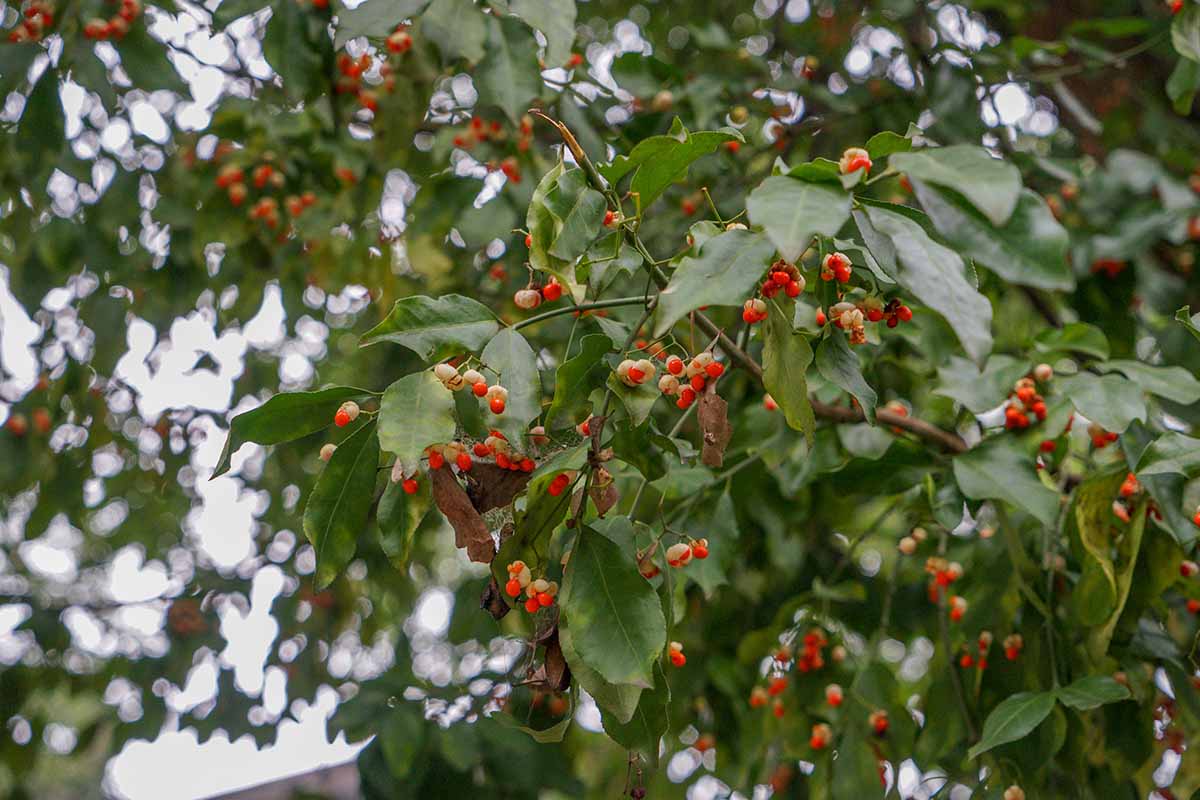

The flowers, with yellowish-green petals and purple anthers, aren’t particularly showy when they emerge in spring.
However, these flowers give way to smooth, yellow-pink fruits that produce white seeds coated with an orangish-red in fall, which are pretty showy.
This is a pretty cool plant overall, especially if you’d like a change from the standard red color palette of the autumn foliage of other varieties, or want something with ornamental seeds that hang around after the leaves fall.
11. Wintercreeper
Yet another east Asian native, E. fortunei is best cultivated in Zones 5 to 9.
It seems that the theme of this evergreen plant is variability: it has a height range of three to 20 feet, a spread ranging from five to 60 feet, and it’s a mounding shrub that’ll also climb and/or crawl with adventitious roots, if given the chance.
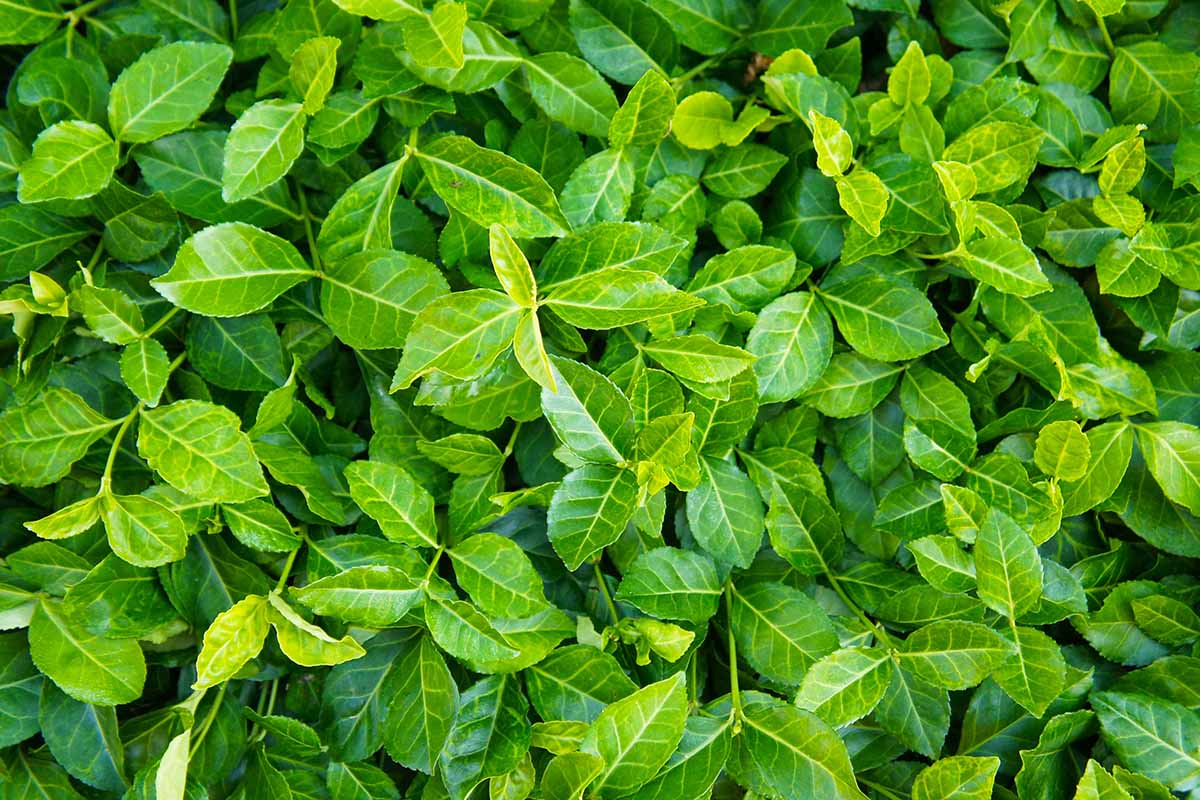

Multifunctional in the landscape, E. fortunei can serve as a vine, shrub, ground cover, hedge, group planting, or anything in between.
The standard species has dark green, egg-shaped foliage with prominent silver veins. Its summer-blooming, greenish-white flowers aren’t at all prominent, but the white seed capsules can be showy in autumn, especially when they split open to reveal orange-coated seeds.
Additionally, this species has numerous cultivars that sport all kinds of foliage thanks to the ease with which E. fortunei mutates.
There are almost too many cultivars to name, but my top picks are ‘Ivory Jade’ and ‘Moonshadow.’
‘Ivory Jade’ has green-gray foliage with ivory margins which develop pink tinges come wintertime.
You can find ‘Ivory Jade’ available at Nature Hills Nursery in #1 containers.
‘Moonshadow’ has leaves with yellow cores that are bordered with dark green.
Nature Hills Nursery also has ‘Moonshadow’ in #1 containers.
Feeling Adventurous? Then Snag Some Euonymus
Choosing the best variety of Euonymus doesn’t need to be a stress-filled process. And who knows, maybe now you want to collect them all! A noble quest, indeed.
Beyond these top picks, you’ve only got about 120 more to go…
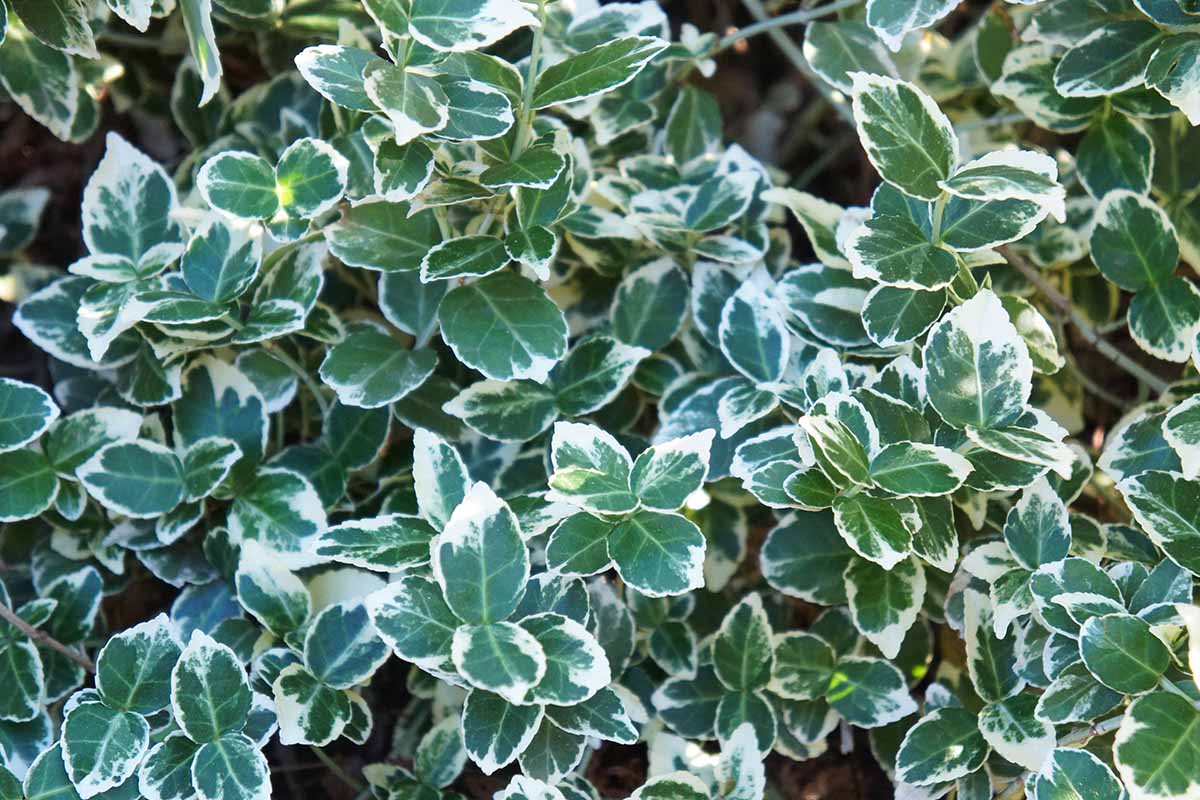

Any questions, comments, or anecdotes can go in the comments section below! Don’t be shy, I’d love to read and respond to them! Please let us know if you have a favorite that wasn’t listed here, and feel free to share your photos.
If you had fun learning about these species, then have at these other Euonymus guides next:

